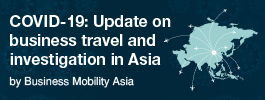Impact Investment Exchange: Taking Wall Street to the backstreet

Managing Director Robert Kraybill discusses how IIX uses financial markets to directly and proactively benefit society.
- In the connected economy Impact Investment Exchange uses equity and debt crowdfunding to link impact investors with like-minded entrepreneurs
- Managing Director Robert Kraybill explains how to balance risk-return-impact requirements
- How IIX quantifies ‘impact’ to address the trust deficit of investors
Employing innovative financial instruments and a range of platforms to best ensure that capital invested has a social and environmental impact as well as a financial return is fundamental to Investment Impact Exchange’s (IIX) business model.
IIX’s Managing Director, Robert Kraybill, who has twenty years of finance and investment banking experience said that: “the 2008 Financial Crisis was a wakeup call to ask myself how can we use the tools of the traditional finance markets in a way that will directly and proactively benefit society.”
Private investors can engage with IIX’s online platform, Impact Partners, Asia’s first and largest equity and debt crowdfunding platform which connects impact investors with pre-screened Impact Enterprises (IEs). This private placement platform, or crowdfunding platform, has nearly 1000 investors.
Now, ten years after IIX’s conception, Impact Partners’ network of investors that they work with represent over $10 billion in assets under management, with over $100 million dollars of capital mobilised through its advisory business. In terms of actually managing assets, through the Woman’s Livelihood Bond Portfolio and through the IIX growth fund –an equity growth investment vehicle, the current amount is about $10 million dollars of assets with a $100-million-dollar expansion of the WLB currently in the pipeline.
The network of investors is a real mix according to Kraybill, including many individual angel investors and in particular ultra-high net worth investors. The network also includes a range of other investors such as family offices, foundations, as well as dedicated impact investment funds, and a number of institutional investors. “It certainly does not include retail investors” he said.
“In terms of the ratio of HNWIs, it depends on the opportunity,” Kraybill explained, adding that, “raising equity capital for fairly early growth stage organisations - we may be raising anywhere from a few hundred thousand dollars to a million dollars for those organisations. We will often target individual angel investors, who have committed $50,000 to $1 million for an investment.”
Securitising micro-loans for impact
One of IIX’s most iconic products is, The Women’s livelihood Bond 1 (WLB1) - a four-year $8 million 5.65% fixed coupon debt security issued in 2017 – the world’s first listed financial instrument with a dual focus on social and financial return was listed on the Singapore Exchange (SGX), with a 60 percent Asian investor base.
“This offers a low-risk modest return which DBS sold through their private banking network, with some investors coming from our own network - family offices and institutional investors.” Kraybill said.
The pioneering instrument is a portfolio backed by loans, supporting a group of high-impact enterprises and microfinance institutions in Vietnam, Cambodia, and the Philippines. Completing its first year of the bond tenor, it is forecasted to provide 385,000 women sustainable livelihood by 2021. Building on the oversubscription of the bond, in 2018, IIX announced it will be launching a second new $100 million WLB2 series with DBS.
However, the challenge in developing this type of financial mechanism is the increased complexity associated with risk-return-impact requirements which adds to the risks and costs involved, necessitating partnerships at the nascent stage. These include bespoke feasibility studies, funding for bond structuring and ongoing monitoring and assessment (both of which were funded by the Rockefeller Foundation).
The United States Agency for International Development (USAID) provided a 50 percent credit protection guarantee for the WLB, and the Department of Foreign Affairs and Trade (DFAT) of Australia subsidised it. Such measures were vital in luring in traditional investors.
It is a regular bond rather than a Social Impact Bond, in the sense that investors are getting a regular financial return that is not linked to the impact, and therefore will not be left out of pocket based on the relative impact.
Satisfying expectations for financial and impact returns
In the world of impact investing motives vary from investor to investor. Some view making an impact secondary to the financial return while others can accept a slightly lower rate of return knowing that their investment is making a more holistic return for the wider stakeholders and the community.
In that sense it is difficult to gauge the financial rate of return across the range of products as this depends on each investor’s appetite for risk.
While IIX offers products where investors should expect the same return as any traditional investment - in addition to generating a positive social or environmental impact - there are other products that a full market rate of return for the associated risks should not be expected.
“Some of the projects where we are helping to raise equity capital for an impact enterprise, we will tell investors that this project for example is very early stage, very high risk, but you probably won’t be fully compensated for taking that risk but the impact is very high. So it really ranges.” Kraybill said.
According to IIX’s 2018 report, Impact Partners has accrued a 10-fold increase in private sector capital raised for each dollar of funding received, supporting 17 IEs and 1.8 million women beneficiaries by 2018.
“In terms of benchmarking equity investments, we have had a number of exits from our equity investment platforms that have had quite good returns on investments, but we have many more investments where there hasn’t been an exit yet so the ultimate return is unclear.”
“The easiest product to specify returns is the Woman’s Livelihood Bond where the investors are receiving a fixed coupon of 5.65% in US Dollars on a 4-year bond.” Kraybill explained.
Addressing the Trust Deficit
One of the biggest challenges for the impact investment industry is developing a framework for measuring impact investment. What is the counterfactual i.e. the achieved effect that might have happened in any case, and how can genuine impact investors be sure that their well-intentioned investments are making a positive difference?
According to a report by research house Cicero published in January 2019, 97 of the 100 independent and restricted financial advisers surveyed said they were either "very concerned" or "fairly concerned" about the potential for environmental, social and governance (ESG) products to be mis-sold to them.
With the impact investment industry growing fast in recent years, an increasing amount of organisations and fund managers are seeking to put an ethical gloss on their investments
There are several methodologies seeking to measure impact including that of Howard Buffett, associate professor at Columbia’s School of International and Public Affairs (SIPA) and grandson of Warren Buffet who developed a formula for the impact rate of return (iRR), while the Global Impact Investing Network (GIIN) manages their own standard of Impact Reporting and Investment Standards (IRIS).
IIX also uses IRIS in addition to the Social Return on Investment (SROI) framework which measures how much social and environmental impact (in dollar figures) is created for every dollar invested into this program.
“For every enterprise, that we work with in any way, we perform an impact assessment. A key part of that process is that we send a team out into the field to meet with actual beneficiaries (employees, customers). We actually get real, on the ground, field level hard data from these customers” Kraybill said.
For The Women’s Livelihood Bond, IIX provides impact reports to investors every six months, during the four-year life of the bond, in addition to a full annual impact assessment back out in the fields to validate the assumptions that were made at the launch of the bond.
“Whether we are acting as an advisor, a portfolio manager and investing our money as a fiduciary, or writing a research report;” Kraybill outlined, “100% of the capital that we are mobilising is going into organisations or instruments that have a direct positive impact on society or the environment.”
It’s not the size that matters it’s how you use it.
Kraybill stressed the importance of the actual impact of the funding at ground level. Huge social or ESG investments and marketing announcements are not necessarily better per se if they are not actually making a commensurate impact. The larger the fund does not automatically mean the larger the impact. What matters is continuously evaluating what is happening at ground level.
Keywords: Financial Exchange, Global Impact, Social Return On Investment









Leave your Comments